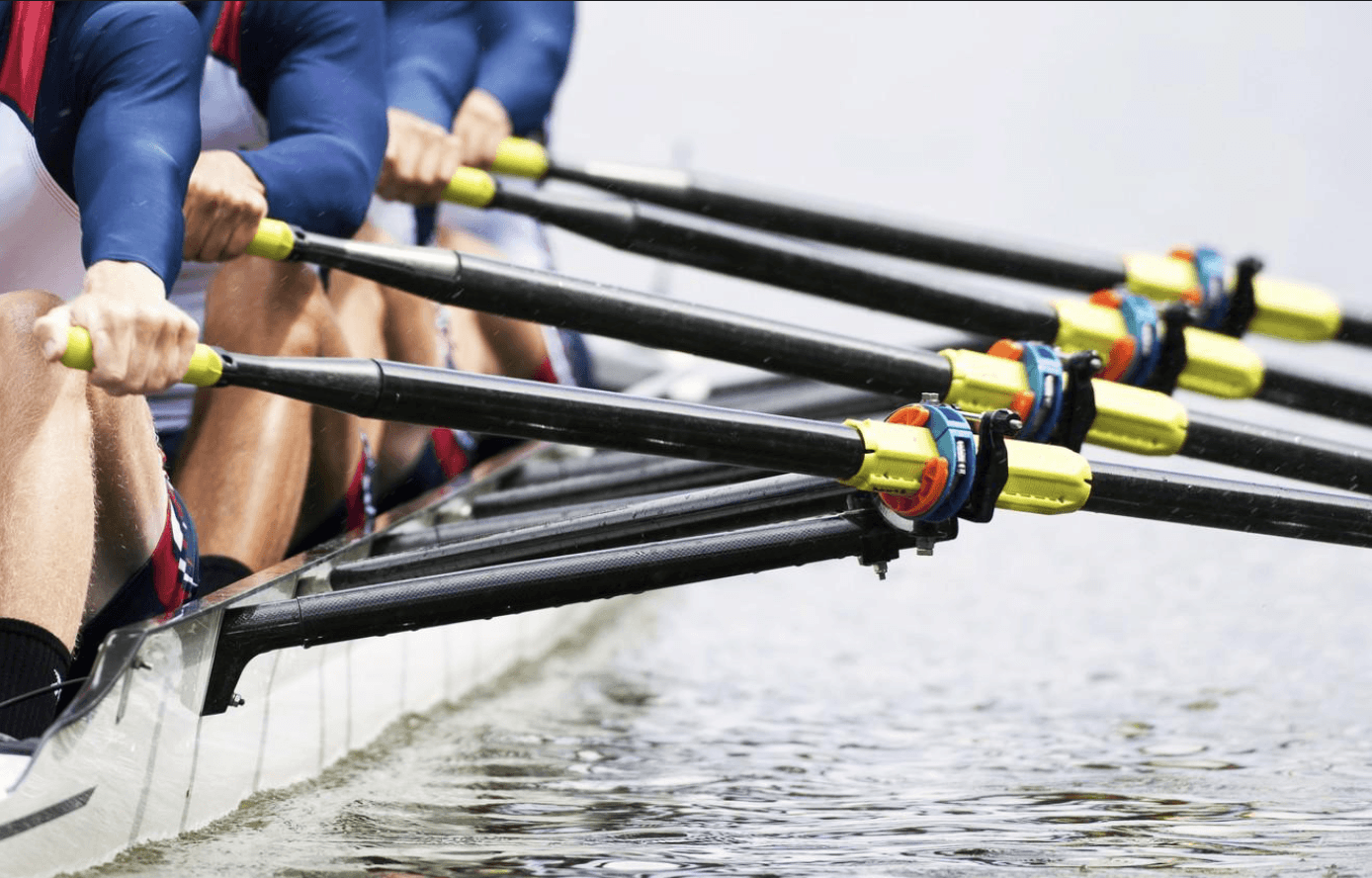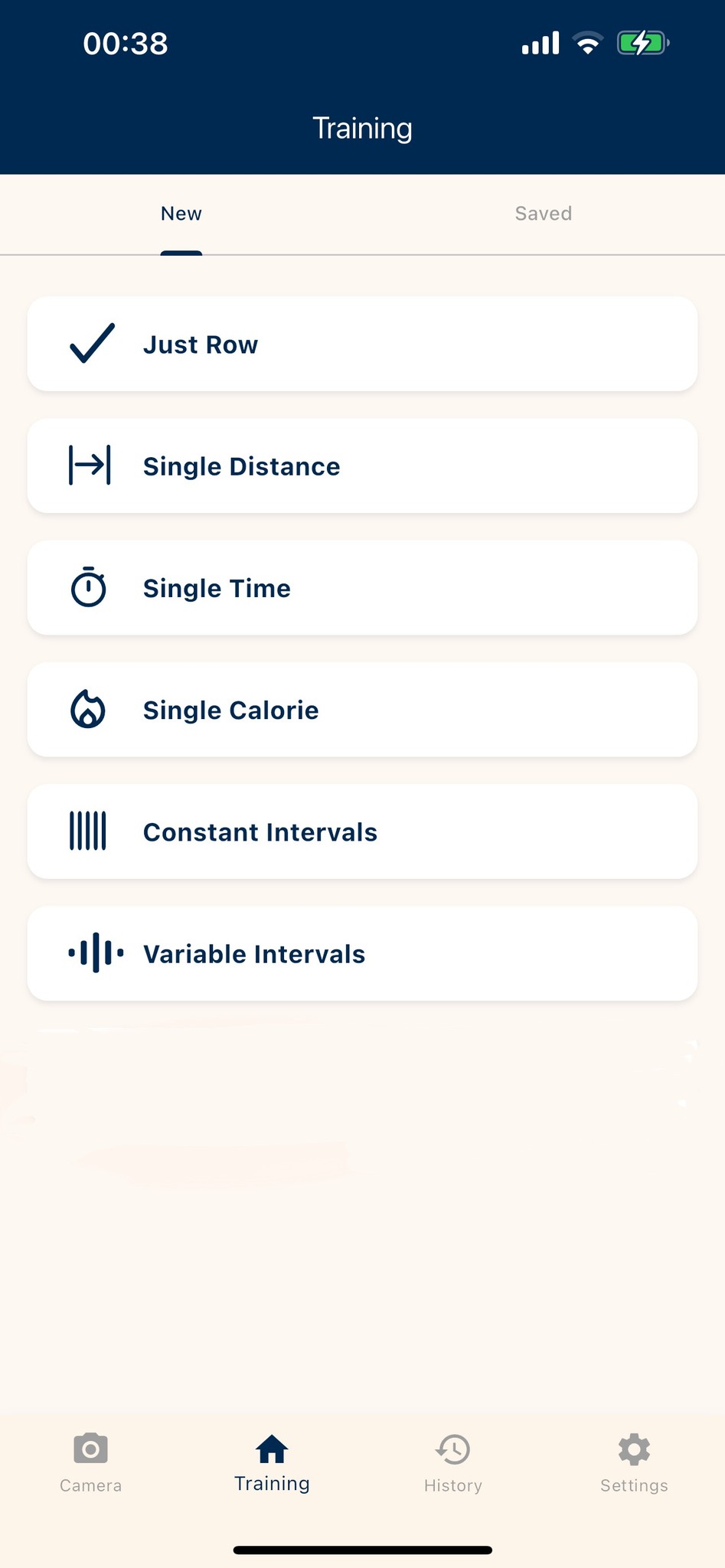
Dec 21, 1999
The Future of Rowing: Innovation, Expansion, and Growth
The Future of Rowing: Innovation, Expansion, and Growth
The Future of Rowing: Innovation, Expansion, and Growth
Rowing is a sport steeped in history, tradition, and a deep connection to nature. However, like many other sports, it is now experiencing a shift driven by innovation, technology, and expanding global interest. From advancements in equipment to the rise of indoor rowing and AI-powered training systems, rowing is undergoing a transformation that will shape its future for years to come. This blog will explore the exciting future of rowing, examining its growth, technological advancements, and potential for expansion on a global scale.
1. Technological Advancements in Rowing
Technology is already making significant changes in the way rowers train, compete, and experience the sport. One of the most significant advancements is the integration of AI-powered systems into rowing equipment. For instance, smart rear camera systems like the ones developed by companies such as Hamla Teknoloji’s waveX are revolutionizing rowing safety and performance. These systems provide real-time feedback on obstacles behind the rower, improving safety by preventing collisions and helping athletes focus on their technique rather than navigating.
Additionally, the development of data-driven performance monitors is enhancing how rowers track their training. Devices that provide detailed feedback on stroke rate, force, and distance rowed are becoming essential tools, helping athletes improve their efficiency and strength. The future of rowing is clearly intertwined with data analytics, allowing rowers to make informed decisions about their training regimens, much like in other sports where data plays a crucial role in performance enhancement.
Another significant change is the improvement in boat and equipment materials. The use of lightweight composites like carbon fiber is helping create faster, more durable, and efficient boats, reducing water resistance and maximizing speed. As these technologies continue to evolve, we can expect even more ergonomic and responsive equipment that will push the boundaries of rowing performance.
2. Indoor Rowing: The Rise of Ergonomics and Accessibility
Another exciting trend shaping the future of rowing is the growing popularity of indoor rowing. Indoor rowing machines, or “ergs,” have become a staple in fitness centers worldwide, making rowing more accessible to people who might not have easy access to water or who prefer the convenience of indoor exercise. With the rise of virtual platforms and communities like Hydrow, rowers can now engage in immersive workouts, race with others globally, and follow guided training programs without stepping into a boat.
This trend is especially significant as it expands the reach of rowing to a broader audience. While traditional rowing was often limited to those living near rivers or rowing clubs, indoor rowing brings the sport to urban areas and those who are looking for a full-body, low-impact workout.
The competitive indoor rowing scene is also expanding, with events like the World Indoor Rowing Championshipsattracting athletes from across the globe. The accessibility and inclusivity of indoor rowing, combined with its growing fitness community, suggests it will continue to play a major role in the future of the sport.
3. Rowing's Global Expansion
Historically, rowing has been most popular in countries like the UK, the United States, Australia, and parts of Europe. However, there is a clear trend towards the global expansion of rowing. Emerging rowing nations in Asia, Africa, and South America are investing in the sport, building more facilities, and encouraging local talent to take up rowing. With rowing gaining Olympic exposure and growing interest in water sports, new countries are entering the competitive scene.
Organizations like World Rowing are actively promoting rowing in underrepresented regions through development programs, providing boats, equipment, and coaching to help these nations participate in international competitions. As a result, the sport is becoming more diverse, and we’re seeing an increase in participation from athletes outside the traditional rowing strongholds.
Moreover, rowing is gaining popularity at the university and youth levels across the world. Schools and universities are investing in rowing programs, recognizing the sport's value in building teamwork, discipline, and physical fitness. This expansion of rowing into new markets is helping to grow the sport globally, ensuring that it reaches new audiences in the coming years.
4. Sustainability and Environmental Awareness
As rowing grows, there is a greater focus on making the sport more sustainable and environmentally friendly. Being a sport deeply connected to nature, rowing federations, clubs, and athletes are becoming increasingly aware of their environmental impact. Efforts to reduce plastic waste, use environmentally friendly boat-building materials, and adopt more sustainable practices in regattas and training camps are becoming a part of rowing culture.
Initiatives like clean water campaigns and partnerships with environmental organizations are helping the rowing community actively contribute to preserving the waters on which they row. In the future, the sport is likely to see even more emphasis on sustainability, with greener technologies, eco-friendly events, and community-driven conservation efforts becoming integral to rowing’s identity.
5. Inclusion and Diversity in Rowing
Another important aspect of rowing’s future is its growing focus on inclusivity and diversity. Rowing has traditionally been seen as an elite sport, but there are ongoing efforts to make it more inclusive and accessible to people from all backgrounds. Initiatives to encourage greater participation from underrepresented groups, including women, minorities, and para-rowers, are helping to reshape the sport.
The Paralympic rowing movement is growing, and adaptive rowing programs are expanding to provide more opportunities for athletes with disabilities. This commitment to diversity is crucial in ensuring that rowing is a sport for everyone, regardless of their background or physical abilities. As rowing continues to evolve, we can expect to see greater efforts towards making the sport truly inclusive.
Conclusion: The Future is Bright for Rowing
The future of rowing is one of innovation, growth, and expansion. With technological advancements improving safety and performance, the rise of indoor rowing bringing the sport to new audiences, and rowing’s global reach expanding, there are many exciting developments on the horizon. As the sport continues to evolve, its deep connection to tradition will remain intact, but with a forward-looking approach that embraces new ideas and technologies.
From elite competition to fitness enthusiasts and new rowing nations, the sport is poised to become more inclusive, accessible, and technologically advanced. Whether on the water or on an indoor machine, rowing will continue to attract those who seek the perfect balance of physical challenge and mental resilience. The next chapter of rowing promises to be a thrilling one, with opportunities for athletes, innovators, and fans alike.
Rowing is a sport steeped in history, tradition, and a deep connection to nature. However, like many other sports, it is now experiencing a shift driven by innovation, technology, and expanding global interest. From advancements in equipment to the rise of indoor rowing and AI-powered training systems, rowing is undergoing a transformation that will shape its future for years to come. This blog will explore the exciting future of rowing, examining its growth, technological advancements, and potential for expansion on a global scale.
1. Technological Advancements in Rowing
Technology is already making significant changes in the way rowers train, compete, and experience the sport. One of the most significant advancements is the integration of AI-powered systems into rowing equipment. For instance, smart rear camera systems like the ones developed by companies such as Hamla Teknoloji’s waveX are revolutionizing rowing safety and performance. These systems provide real-time feedback on obstacles behind the rower, improving safety by preventing collisions and helping athletes focus on their technique rather than navigating.
Additionally, the development of data-driven performance monitors is enhancing how rowers track their training. Devices that provide detailed feedback on stroke rate, force, and distance rowed are becoming essential tools, helping athletes improve their efficiency and strength. The future of rowing is clearly intertwined with data analytics, allowing rowers to make informed decisions about their training regimens, much like in other sports where data plays a crucial role in performance enhancement.
Another significant change is the improvement in boat and equipment materials. The use of lightweight composites like carbon fiber is helping create faster, more durable, and efficient boats, reducing water resistance and maximizing speed. As these technologies continue to evolve, we can expect even more ergonomic and responsive equipment that will push the boundaries of rowing performance.
2. Indoor Rowing: The Rise of Ergonomics and Accessibility
Another exciting trend shaping the future of rowing is the growing popularity of indoor rowing. Indoor rowing machines, or “ergs,” have become a staple in fitness centers worldwide, making rowing more accessible to people who might not have easy access to water or who prefer the convenience of indoor exercise. With the rise of virtual platforms and communities like Hydrow, rowers can now engage in immersive workouts, race with others globally, and follow guided training programs without stepping into a boat.
This trend is especially significant as it expands the reach of rowing to a broader audience. While traditional rowing was often limited to those living near rivers or rowing clubs, indoor rowing brings the sport to urban areas and those who are looking for a full-body, low-impact workout.
The competitive indoor rowing scene is also expanding, with events like the World Indoor Rowing Championshipsattracting athletes from across the globe. The accessibility and inclusivity of indoor rowing, combined with its growing fitness community, suggests it will continue to play a major role in the future of the sport.
3. Rowing's Global Expansion
Historically, rowing has been most popular in countries like the UK, the United States, Australia, and parts of Europe. However, there is a clear trend towards the global expansion of rowing. Emerging rowing nations in Asia, Africa, and South America are investing in the sport, building more facilities, and encouraging local talent to take up rowing. With rowing gaining Olympic exposure and growing interest in water sports, new countries are entering the competitive scene.
Organizations like World Rowing are actively promoting rowing in underrepresented regions through development programs, providing boats, equipment, and coaching to help these nations participate in international competitions. As a result, the sport is becoming more diverse, and we’re seeing an increase in participation from athletes outside the traditional rowing strongholds.
Moreover, rowing is gaining popularity at the university and youth levels across the world. Schools and universities are investing in rowing programs, recognizing the sport's value in building teamwork, discipline, and physical fitness. This expansion of rowing into new markets is helping to grow the sport globally, ensuring that it reaches new audiences in the coming years.
4. Sustainability and Environmental Awareness
As rowing grows, there is a greater focus on making the sport more sustainable and environmentally friendly. Being a sport deeply connected to nature, rowing federations, clubs, and athletes are becoming increasingly aware of their environmental impact. Efforts to reduce plastic waste, use environmentally friendly boat-building materials, and adopt more sustainable practices in regattas and training camps are becoming a part of rowing culture.
Initiatives like clean water campaigns and partnerships with environmental organizations are helping the rowing community actively contribute to preserving the waters on which they row. In the future, the sport is likely to see even more emphasis on sustainability, with greener technologies, eco-friendly events, and community-driven conservation efforts becoming integral to rowing’s identity.
5. Inclusion and Diversity in Rowing
Another important aspect of rowing’s future is its growing focus on inclusivity and diversity. Rowing has traditionally been seen as an elite sport, but there are ongoing efforts to make it more inclusive and accessible to people from all backgrounds. Initiatives to encourage greater participation from underrepresented groups, including women, minorities, and para-rowers, are helping to reshape the sport.
The Paralympic rowing movement is growing, and adaptive rowing programs are expanding to provide more opportunities for athletes with disabilities. This commitment to diversity is crucial in ensuring that rowing is a sport for everyone, regardless of their background or physical abilities. As rowing continues to evolve, we can expect to see greater efforts towards making the sport truly inclusive.
Conclusion: The Future is Bright for Rowing
The future of rowing is one of innovation, growth, and expansion. With technological advancements improving safety and performance, the rise of indoor rowing bringing the sport to new audiences, and rowing’s global reach expanding, there are many exciting developments on the horizon. As the sport continues to evolve, its deep connection to tradition will remain intact, but with a forward-looking approach that embraces new ideas and technologies.
From elite competition to fitness enthusiasts and new rowing nations, the sport is poised to become more inclusive, accessible, and technologically advanced. Whether on the water or on an indoor machine, rowing will continue to attract those who seek the perfect balance of physical challenge and mental resilience. The next chapter of rowing promises to be a thrilling one, with opportunities for athletes, innovators, and fans alike.
Rowing is a sport steeped in history, tradition, and a deep connection to nature. However, like many other sports, it is now experiencing a shift driven by innovation, technology, and expanding global interest. From advancements in equipment to the rise of indoor rowing and AI-powered training systems, rowing is undergoing a transformation that will shape its future for years to come. This blog will explore the exciting future of rowing, examining its growth, technological advancements, and potential for expansion on a global scale.
1. Technological Advancements in Rowing
Technology is already making significant changes in the way rowers train, compete, and experience the sport. One of the most significant advancements is the integration of AI-powered systems into rowing equipment. For instance, smart rear camera systems like the ones developed by companies such as Hamla Teknoloji’s waveX are revolutionizing rowing safety and performance. These systems provide real-time feedback on obstacles behind the rower, improving safety by preventing collisions and helping athletes focus on their technique rather than navigating.
Additionally, the development of data-driven performance monitors is enhancing how rowers track their training. Devices that provide detailed feedback on stroke rate, force, and distance rowed are becoming essential tools, helping athletes improve their efficiency and strength. The future of rowing is clearly intertwined with data analytics, allowing rowers to make informed decisions about their training regimens, much like in other sports where data plays a crucial role in performance enhancement.
Another significant change is the improvement in boat and equipment materials. The use of lightweight composites like carbon fiber is helping create faster, more durable, and efficient boats, reducing water resistance and maximizing speed. As these technologies continue to evolve, we can expect even more ergonomic and responsive equipment that will push the boundaries of rowing performance.
2. Indoor Rowing: The Rise of Ergonomics and Accessibility
Another exciting trend shaping the future of rowing is the growing popularity of indoor rowing. Indoor rowing machines, or “ergs,” have become a staple in fitness centers worldwide, making rowing more accessible to people who might not have easy access to water or who prefer the convenience of indoor exercise. With the rise of virtual platforms and communities like Hydrow, rowers can now engage in immersive workouts, race with others globally, and follow guided training programs without stepping into a boat.
This trend is especially significant as it expands the reach of rowing to a broader audience. While traditional rowing was often limited to those living near rivers or rowing clubs, indoor rowing brings the sport to urban areas and those who are looking for a full-body, low-impact workout.
The competitive indoor rowing scene is also expanding, with events like the World Indoor Rowing Championshipsattracting athletes from across the globe. The accessibility and inclusivity of indoor rowing, combined with its growing fitness community, suggests it will continue to play a major role in the future of the sport.
3. Rowing's Global Expansion
Historically, rowing has been most popular in countries like the UK, the United States, Australia, and parts of Europe. However, there is a clear trend towards the global expansion of rowing. Emerging rowing nations in Asia, Africa, and South America are investing in the sport, building more facilities, and encouraging local talent to take up rowing. With rowing gaining Olympic exposure and growing interest in water sports, new countries are entering the competitive scene.
Organizations like World Rowing are actively promoting rowing in underrepresented regions through development programs, providing boats, equipment, and coaching to help these nations participate in international competitions. As a result, the sport is becoming more diverse, and we’re seeing an increase in participation from athletes outside the traditional rowing strongholds.
Moreover, rowing is gaining popularity at the university and youth levels across the world. Schools and universities are investing in rowing programs, recognizing the sport's value in building teamwork, discipline, and physical fitness. This expansion of rowing into new markets is helping to grow the sport globally, ensuring that it reaches new audiences in the coming years.
4. Sustainability and Environmental Awareness
As rowing grows, there is a greater focus on making the sport more sustainable and environmentally friendly. Being a sport deeply connected to nature, rowing federations, clubs, and athletes are becoming increasingly aware of their environmental impact. Efforts to reduce plastic waste, use environmentally friendly boat-building materials, and adopt more sustainable practices in regattas and training camps are becoming a part of rowing culture.
Initiatives like clean water campaigns and partnerships with environmental organizations are helping the rowing community actively contribute to preserving the waters on which they row. In the future, the sport is likely to see even more emphasis on sustainability, with greener technologies, eco-friendly events, and community-driven conservation efforts becoming integral to rowing’s identity.
5. Inclusion and Diversity in Rowing
Another important aspect of rowing’s future is its growing focus on inclusivity and diversity. Rowing has traditionally been seen as an elite sport, but there are ongoing efforts to make it more inclusive and accessible to people from all backgrounds. Initiatives to encourage greater participation from underrepresented groups, including women, minorities, and para-rowers, are helping to reshape the sport.
The Paralympic rowing movement is growing, and adaptive rowing programs are expanding to provide more opportunities for athletes with disabilities. This commitment to diversity is crucial in ensuring that rowing is a sport for everyone, regardless of their background or physical abilities. As rowing continues to evolve, we can expect to see greater efforts towards making the sport truly inclusive.
Conclusion: The Future is Bright for Rowing
The future of rowing is one of innovation, growth, and expansion. With technological advancements improving safety and performance, the rise of indoor rowing bringing the sport to new audiences, and rowing’s global reach expanding, there are many exciting developments on the horizon. As the sport continues to evolve, its deep connection to tradition will remain intact, but with a forward-looking approach that embraces new ideas and technologies.
From elite competition to fitness enthusiasts and new rowing nations, the sport is poised to become more inclusive, accessible, and technologically advanced. Whether on the water or on an indoor machine, rowing will continue to attract those who seek the perfect balance of physical challenge and mental resilience. The next chapter of rowing promises to be a thrilling one, with opportunities for athletes, innovators, and fans alike.
Our latest stories:
Our latest stories:


Jul 17, 2024
A Comprehensive Guide to Rowing Equipment and Materials
A Comprehensive Guide to Rowing Equipment and Materials
A Comprehensive Guide to Rowing Equipment and Materials


Aug 15, 2023
Globalization of Rowing: The Evolution and Worldwide Expansion of the Sport
Globalization of Rowing: The Evolution and Worldwide Expansion of the Sport
Globalization of Rowing: The Evolution and Worldwide Expansion of the Sport


Dec 21, 1999
The Future of Rowing: Innovation, Expansion, and Growth
The Future of Rowing: Innovation, Expansion, and Growth
The Future of Rowing: Innovation, Expansion, and Growth
See all posts


